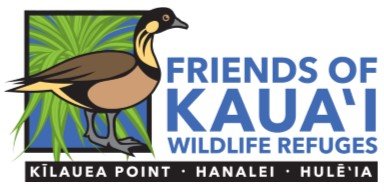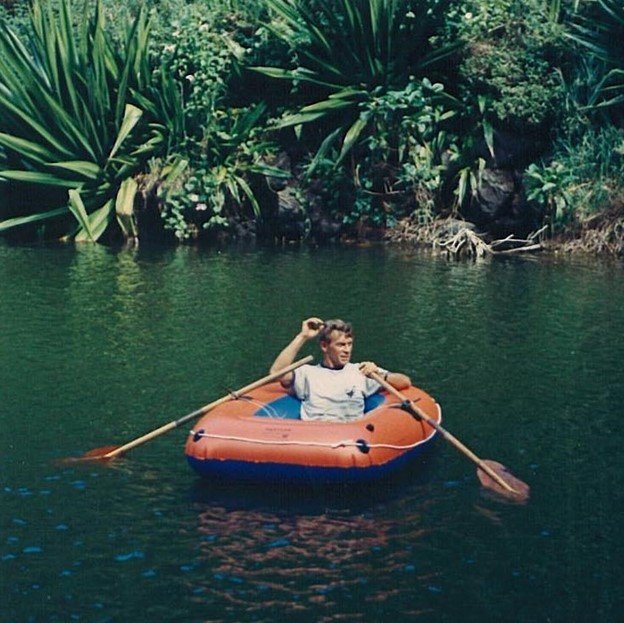Celebrating the life and work of John A. Maciolek
The family of John A. Maciolek recently chose to honor his life and his work with a special gift to Friends of Kauaʻi Wildlife Refuges. We are deeply grateful for the honor of this tribute and would like to share a bit about this incredible man. Below is a memorial tribute that was shared with us.
John Maciolek died at his residence in Florence, Oregon on August 29, 2021. He was born in West Allis, Wisconsin on November 2, 1928 to John H. Maciolek and Stella P. (Kaminski) Maciolek. John was preceded in death by his parents and his sisters Marcella Kolata, Florence Curran, and Mary Maciolek who had all moved to Green Valley, Arizona when they retired.
John is survived by his wife of 65 years; Penny Maciolek and Rimsky Korsakoff – their awesome canine companion of Florence, Oregon. Also, John is survived by daughter Kaye (Tim) Downey and their sons Tyler and Forrest, daughter Ann (Dennis) Wagoner and their daughter Maile and son Arden, daughter Nina (Tim) Gaylord and their daughter Jessica and son Colin, son David and his son Kyle, daughter Julie Maciolek (Bill Pollick) as well as great grandsons Tristan, Julian, Siddhartha, and Lee and great granddaughter Finley.
John moved from Wisconsin to southern California as a teenager. He lived with his uncle Eddie Kaminski and finished high school in Santa Monica. John completed a Bachelor’s degree in fisheries at Oregon State in Corvallis. He then completed a Master’s Degree in fresh water biology at UC Berkeley where he met his life-long friend Phil Pister. John enlisted in the Air Force and found himself stationed in Anchorage, Alaska. He often describes his time in Alaska as one of the best times of his life: “I had a plane, a pilot, all the beer I wanted, and was told to fly in to remote lakes and get water samples. I could fish, and enjoy the scenery and was paid for my time.”
John met Penny near Anchorage. They were married in Ithaca New York where they lived while John finished his PhD in fresh water biology at Cornell University. He met another lifetime friend, Bob Levenson, there. Ann and Nina were born in Ithaca. The family moved to Convict Lake California where John worked for the US Fish and Wildlife Service. He was able to do research and take some incredible hikes into the Sierra Mountains, often in the company of Fish and Game Biologist Phil Pister. John bought property at and built a beautiful home at McGee Creek; David was born while the family lived at McGee Creek. The family spent many summers at McGee Creek – even after they had moved to Hawaii.
John was offered a transfer with Fish and Wildlife Service and an associate professorship at University of Hawaii – Manoa campus so the family moved to Oahu and then to Kula, Maui. Julie was born on Maui. The family moved to Kilauea, Kauai for the last years of the Hawaii experience – John’s office there was right out at the edge of the black lava cliffs, surrounded by red-footed boobies and shearwaters…next to the Kilauea Lighthouse. Tourists would ask if his office was circular when they came out to tour.
The final years that John worked for Fish and Wildlife were spent at a Bremerton office near Seattle, Washington. When John retired – he spent time back at McGee Creek and eventually decided to build a house in Oregon – so he did that – and moved to a wonderful cabin tucked in among large trees and overlooking Lake Woahink.
John was an incredible man; his brain was always “on”. He was a dedicated researcher – he loved science and everything about science. He was well-published and respected in the science community. John mentored many graduate students at University of Hawaii and even hosted them at his home on Maui while they completed their projects. He attended and was recognized by colleagues at international limnology conferences. He was a self-taught builder of houses as evidenced by his homes in California and Oregon. He was a man of principle – he respected education and hard work. He often said almost 90% of success in any job was due to common sense and perseverance. He loved the outdoors, his family, the family pets, hiking, mushrooming, crossword puzzles, watching 3 different sports channels at the same time, and making the best breakfasts. He will be greatly missed!
Highlights of John Maciolek’s body of work on Kauaʻi:
Several highlights of his work on Kauaʻi include his research and publication on the Damselfly published in 1979 and his Comprehensive Stream Study. While he was on Kauaʻi, John cataloged every fresh water stream on the island and wrote up his findings of the aquatic life within the streams. This was quite a noteworthy feat, given the number of natural waterways that exist on Kauaʻi.
The “Timbol and Maciolek Hawaiian Islands Stream Survey" is available online and is interactive, so results for a specific location are revealed when clicking on a sample site. Their methodology and references are also available ONLINE.
Notes:
"Fifty-six perennial streams were reported on Kauai by Timbol and Maciolek (1978). At the time of the survey, 75 % were continuous, the highest percentage in the State. Twelve of the streams (21 %) had altered channels. Modified sections of the altered streams averaged 1 % (range 0.1 - 13). A total of 8 km of modified channel was estimated for the 12 altered streams. Three channel types occurred and the estimated percentage of the 8 km total by channel modification type was: Cleared and/or realigned - 51 % Revetment - 35 % Elevated culvert - 14 %
There were no lined channels identified among the altered Kauai streams. Of all Kauai streams, 45 % were reported to have water diverted from their channels and 68 % had road crossings. Kauai was ranked as second only to Molokai in the proportion of physically pristine streams (32 %)."
Additional references on Hawaii’s aquatic life written by John Maciolek:
Mack, John. 1975. Hawaii’s First Natural Area Preserve. Eleventh hour action saves Ahihi-Kinau from developers. Defenders of Wildlife, December. V49.
Parrish JD, Maciolek JA, Timbol AS, Hathaway CB Jr, Norton, SE. 1984. Status of stream channel modification in Hawaii and its effects on native aquatic fauna. In: Smith CW, editor. Proceedings of the Fifth Conference in Natural Sciences Hawaii Volcanoes National Park; 1984 June 5-7; Honolulu. Honolulu (HI): University of Hawaii at Manoa, Department of Botany. p 83-84.
John Maciolek’s research also contributed to and/or is cited in these reports:
Hawaii Stream Assessment A Preliminary Appraisal of Hawaii's Stream Resources Report Prepared for COMMISSION ON WATER RESOURCE MANAGEMENT State of Hawaii By HAWAII COOPERATIVE PARK SERVICE UNIT Western Region Natural Resources and Research Division National Park Service Honolulu, Hawaii December 1990: ONLINE.
‘Āhihi-Kīna‘u Natural Area Reserve Draft Management Plan Department of Land and Natural Resources May 2012 ONLINE.


